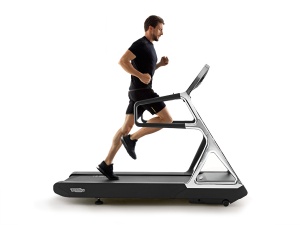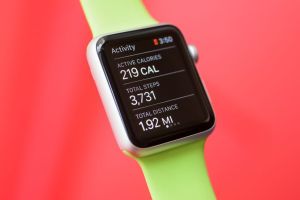I think any of us who workout regularly have heard a trainer claim that when we were done with a workout we were going to continue to burn massive calories throughout the day. I know I’ve heard it a bunch. Maybe you’ve heard it called EPOC, or Excess Post-Exercise Oxygen Consumption. What is EPOC? What does it do? And is it real? Do you really burn massive calories after a workout? Let’s talk about it!
What is EPOC?
EPOC is the common phrase used to describe Excess Post-Exercise Oxygen Consumption or sometimes also called the Afterburn Effect. This is in reference to an increased metabolism or caloric burn state that is induced after an exercised session due to the increased consumption of oxygen needed to restore the body to a pre-exercise state. EPOC is higher for the re-synthesise of lactate to glycogen, the re-oxygenation of myoglobin and hemoglobin, elevated heart rate, elevated hormones such as adrenaline and noradrenaline, and higher core temperature.
What exercise increases EPOC and burns more energy after?
Exercise that requires more oxygen to recovery will cause for greater EPOC. This is why a lot of trainers suggest that High Intensity Interval Training has a great effect on EPOC, meaning people will burn even more calories after consumption. High intensity requires more oxygen to recover from. Similarly circuit training and heavy resistance training with short breaks will also increase anaerobic pathways (and I mean heavy lifting here), leading to significant EPOC. Basically, if your heart rate ends up above threshold and you are getting an anaerobic effect from your workout, you are going to have more after burn.
How much does EPOC burn?
There is actually a lot left to be researched and determined about the Afterburn Effect and what impact it actually has on caloric burn, and I’m going to talk about some research on EPOC towards the end of this post. Some research has suggested that High Intensity Interval or High Intensity Strength training can add anywhere between 6-15% of total energy cost during that session. Effects are going to last anywhere between 2 and 10 hours and so you might burn around an extra 150 to 200 calories, but with it being hard to judge exact burn, it shouldn’t be calories that you completely bank on (or plan for).
The Truth About High Intensity Work
I think it’s important to note here, and it’s something I have discussed on this blog before as well, it’s really hard to get into the anaerobic threshold zone unless you are a well seasoned athlete. Getting your heartrate to spike high in a matter of seconds and going all out on an exercise is extremely difficult to do (even for me who is an avid runner and works out A LOT). A typical HIIT workout is usually medium intensity at best and you’re lucky to be able to consider it aerobic training. It’s misleading, but honestly true. So I would advise that you never bank on those extra calories from EPOC because it’s very hard to tell if they are actually coming, how much you’ll burn, and for how long.
So what do the Scientific articles say about exercise and EPOC?
Past studies have found that HIIT and resistance training has a significant raise in EPOC throughout the day comparative to steady state cardio. Some studies have suggested that this difference is fairly minimal (Pribyslavska et al., 2018). Some studies have suggested that EPOC appears in two main phases, the first lasting less than two hours and the second lasting up to 48 hours with more prolonged effects (Speakman & Selman, 2003).
As Borsheim & Bahr (2003) point out, many factors such as intensity, duration, training status, and gender may effect EPOC, making it even more difficult to monitor and measure. Trained individuals have a faster return to post-exercise metabolism and rest compared to less trained individuals. Interestingly though, other studies have found that more trained individuals have an overall increases Resting Metabolic Rate (and thus burn more calories overall) partially due to training status but also due to muscular build (muscle burns more calories after all (Speakman & Selman, 2003).
So what’s the takeaway? Plenty of studies have shown that EPOC is a real phenomenon but there is still little known about the exact mechanisms and specifics on measuring EPOC burn. There is still plenty of research to be done on the topic.
For now, I think that it’s important to keep in mind that it may be very difficult to workout and/or lift to the point where EPOC is taking place. Remember, high intensity online is often medium intensity and unless you are a training lifter, you probably aren’t dipping into anaerobic storage when you lift . But that’s okay, this should not discourage you from that type of exercise which can be very beneficial to training, endurance, and cardiovascular health. So you do you! I personally just don’t think it is worth banking on EPOC as a means to burn extra calories. (I’m also not a fan of calorie counting, but that’s just me, for some people it works).
Anyway, that’s my take on EPOC. What other topics do you want me to tackle in the future? Let me know in the comments below!
Until next time,
Kat
Sources and further reading:
Borsheim, E. & Bahr, R. (2003). Effect of exercise intensity, duration, and mode on post-exercise oxygen consumption. Sports Medicine, 33(14), 1037-1060. https://doi.org/10.2016/00008256-200333140-00002
McCall, P. (2014). 7 things to know about excess post-exercise oxygen consumption (EPOC). Ace Fitness. https://www.acefitness.org/education-and-resources/professional/expert-articles/5008/7-things-to-know-about-excess-post-exercise-oxygen-consumption-epoc/
Pribyslavska, V., Caputo, J.L., Coons, J.M., & Barry, V.W. (2018). Impact of EPOC adjustment on estimation of energy expenditure using activity monitors. Journal of Medical engineering & Technology. 42(4), 265-273. https://doi.org/10.1080/03091902.2018.1472823
Speakman, J.R., Selman, C. (2003). Physical activity and resting metabolic rate. The Proceedings of the Nutrition Society, 62(3), 621-34. https://doi.org/10.1079/PNS2003282
 The generalized rule of thumb for calories burned running is that the average person burns 100 calories per mile of running. However, it’s easy to spot how this can be inaccurate. This doesn’t take into consideration weight, speed, or how seasoned of a runner you are. After all, let’s be fair, no 2 runners are created equal. If that was true, I’d always be able to keep pace with my friend who usually is at least 2 minutes ahead of me!
The generalized rule of thumb for calories burned running is that the average person burns 100 calories per mile of running. However, it’s easy to spot how this can be inaccurate. This doesn’t take into consideration weight, speed, or how seasoned of a runner you are. After all, let’s be fair, no 2 runners are created equal. If that was true, I’d always be able to keep pace with my friend who usually is at least 2 minutes ahead of me! There’s no 100% perfect method to calculate how many calories a person burns when running. A lot of things go into the calculations. Running watches and apps can give you generalized ideas of your calorie burn, as can online calculators, but those can also have a level of error.
There’s no 100% perfect method to calculate how many calories a person burns when running. A lot of things go into the calculations. Running watches and apps can give you generalized ideas of your calorie burn, as can online calculators, but those can also have a level of error.
 So now that you have your RMR and BMR numbers what do you do with them to find out your daily caloric needs? According to the Harris Benedict formula, you can determine your every day caloric needs using and estimate of you daily activity level and your BMR.
So now that you have your RMR and BMR numbers what do you do with them to find out your daily caloric needs? According to the Harris Benedict formula, you can determine your every day caloric needs using and estimate of you daily activity level and your BMR.